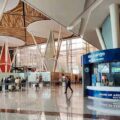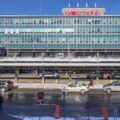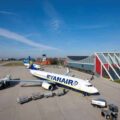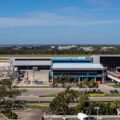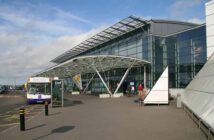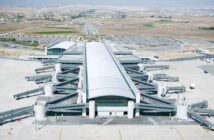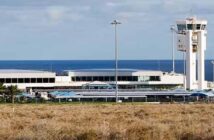Melbourne Tullamarine Airport, known as MEL, serves as the primary gateway to Victoria, handling over 30 million passengers annually as Australia’s second-busiest airport. Located 20 kilometres northwest of Melbourne’s city centre, this 24-hour hub offers a modern and efficient experience, with four terminals catering to both international and domestic travellers. Its well-organised layout, diverse amenities, and strong transport links make it a practical entry point for exploring the region.
The passenger experience at Melbourne Tullamarine is generally efficient, though it varies by terminal. Terminal 2 (T2), the international hub, is modern, with ample seating and clear signage, though some travellers report long queues at passport control, taking up to 45 minutes during peak times. Terminals 1, 3, and 4 handle domestic flights, with T1 serving Qantas, T3 for Virgin Australia, and T4 for budget carriers like Jetstar. T4 can feel basic and crowded, with limited seating noted by passengers. Check-in for international flights is recommended three hours prior, and two hours for domestic, to account for security and immigration processes. SmartGate facial recognition in T2 speeds up immigration for eligible passengers, but non-Australian citizens may face manual checks, adding time. Recent reviews mention occasional delays in baggage delivery, sometimes up to 45 minutes, and limited assistance for passengers with reduced mobility, particularly at remote gates requiring bus transfers.
Access to the airport is straightforward, with multiple transport options. The SkyBus express service runs every 10 minutes to Melbourne’s CBD, taking about 30 minutes and costing around £10. Taxi ranks outside Terminals 1 and 4 offer rides to the city for approximately £30, including a £2.60 airport pick-up fee, while rideshare services like Uber and Ola operate from designated areas, with fares slightly lower. Car rental desks, including Avis, Budget, and Hertz, are located in the T1-T2-T3 car park, ideal for exploring Victoria. A train station is under construction, expected to open by 2029, but for now, buses and taxis connect to Southern Cross Station for regional trains. The Tullamarine Freeway ensures a 25 to 30-minute drive, though peak-hour traffic or ongoing construction, such as T123 car park works until August 2025, can add up to an hour of delay.
The airport’s layout is compact, with all four terminals within a single complex, connected by a free shuttle bus running every 15 minutes from 5:00 AM to midnight. Walking between terminals takes 5 to 10 minutes, though signage in T4 can be less clear. T2 is the most modern, with a spacious departures area and viewing decks for plane spotting.
Security checkpoints, equipped with X-ray machines and metal detectors, are located in each terminal, but T4’s older facilities can lead to congestion during peak periods like mornings or holidays. Fast Track lanes in T2, available for premium passengers or through services like marhaba, help bypass queues.
Dining and retail options are plentiful, particularly in T2, which boasts duty-free shops, luxury brands like Hermès, and local souvenirs. Eateries range from quick bites at Hungry Jack’s to upscale dining at Café Vue, though prices are higher than in the city. T1 and T3 offer solid options like Hudsons Coffee and sushi bars, while T4’s choices are limited to basic cafes and fast food. Travellers recommend eating in Melbourne for better value. Free Wi-Fi is available across all terminals, though speeds can slow during busy periods. The “Read & Return” library in T2 is a unique touch, allowing passengers to borrow books for their flight.
Facilities cater to diverse needs. Currency exchange and ATMs are scattered throughout, with Travelex offering multi-currency withdrawals in T2. Luggage storage, via Smartcarte in T2 and T4, and bag-wrapping services in T2 provide convenience. Premium lounges, including Qantas Club in T1 and Emirates Lounge in T2, offer showers, Wi-Fi, and refreshments, accessible via membership or payment (from £50). Shower facilities are available in T2, but towels must be brought. Accessibility is strong, with ramps, lifts, and assistance available upon request, though some report delays in wheelchair support. No smoking areas are provided for transiting passengers due to strict regulations, with external zones available landside.
On-time performance is generally reliable, with real-time updates available via the Melbourne Airport app or flightstats.com. Delays, averaging 30 minutes, often stem from peak-season crowds, weather, or air traffic control issues. Construction-related disruptions, like lane closures on Naarm Way until September 2025, can also impact access. The airport’s Overstay Guarantee for parking helps mitigate costs from unexpected flight delays.
Connections are seamless for domestic transfers, with T1, T3, and T4 in close proximity, though international-to-domestic transfers via T2 require clearing customs and security, needing at least two hours. MEL serves 47 airlines, including Qantas, Virgin Australia, and international carriers like Emirates and Singapore Airlines, connecting to over 100 destinations. The compact layout aids quick transfers, but manual processes in T4 can slow budget airline connections.

